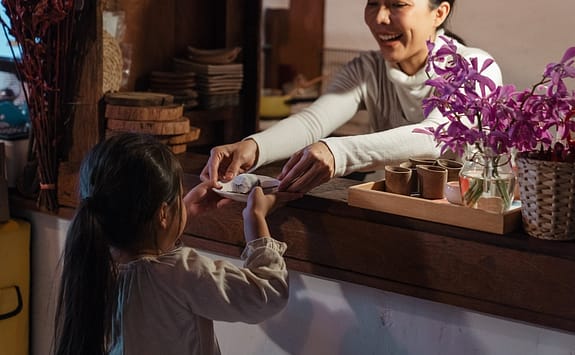Serving another human-being without expectation of reward uplifts both the giver and receiver. Service is a powerful way to develop understanding of and relatability with other people. It is also a great antidote to too much media consumption on a screen. Whether we serve our family, friends, neighbors, or people we’ve never met before; the effect of serving another person is significant.

Just the other day, my seven year old daughter had the idea to draw a picture and send it to her grandparents. Using a beginners guide, she drew pictures of horses and then put the drawings into individual envelopes. She then bugged mom and dad until she got the addresses and stamps needed to send her pictures in the mail. Did her grandparents appreciate her drawings? You bet they did! They loved those rough drawings thoughtfully given by their grand-daughter.
I’m grateful for my daughter’s example of simple service; because, as a parent, I’ve often felt overwhelmed at the thought of doing a big service project that involves a lot of time and energy. So instead of getting overwhelmed, I try to focus on small things my children and I can do that don’t require starting a new charity! One activity my children and I enjoy is making cookies and taking them to neighbors. For birthdays and holidays, I make it a priority to involve my children in making or purchasing gifts for others. I’ve found this is a powerful way to help children think about and celebrate the people around them. Other activities we enjoy are tending a garden or taking care of animals . . . even if it is just our fish. I notice that these activities help my children develop an awareness of the needs of the living things around them.
As children get older, the service activities that interest them will likely change and evolve. Mowing the lawn for a neighbor who has poor health, volunteering time at the local food pantry, or helping elementary school children learn to read are just a few of the many activities our youth can engage with as they get older.
Regardless of our age, service helps us get outside ourselves. It’s easier to notice and feel grateful for the blessings we enjoy in our own lives when we get involved helping those around us. I’m convinced that each of us, including our children, will have better balance in our lives when we make serving others something we do on a regular basis. In fact, to a large extent, the success we experience in our careers and professions is a direct result of how much value we bring to other people’s lives in our given field of service. I believe our children will be that much more prepared to live productive and joyful lives as they take time now to practice serving within their families and communities.
Here are few terrific online resources to discover service opportunities in our own neighborhoods:
Photo by Ketut Subiyanto on Pexels.com





